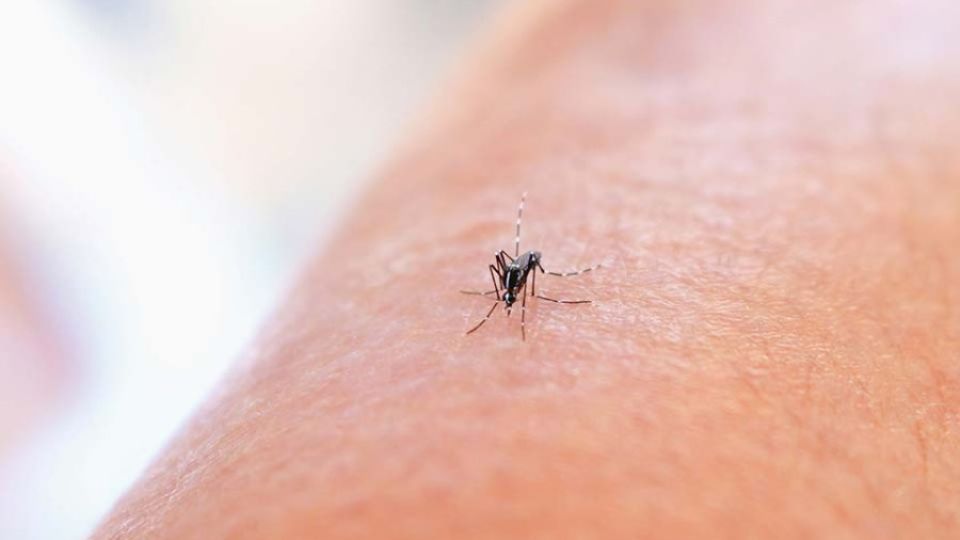November 13, 2024
KATHMANDU – During monsoon last year, the Chandannath Municipality of Jumla district reported several cases of dengue. The local unit has reported cases of infection from the deadly virus this year too.
Although most cases were locally transmitted, health workers in the district don’t consider the virus spread a serious public health problem. This is because Jumla is among the coldest places in the country, with temperatures dipping to subzero levels in the winter.
Studies, however, show a disturbing development.
“My study shows the presence of Aedes aegypti and Aedes albopictus mosquitoes and their larvae in Chandannath Municipality,” said Buddhi Ram Oli, a PhD scholar at the Central Department of Zoology of the Tribhuvan University. “Chandannath Municipality is located at an elevation of 2,438 metres, and this is the first time that dengue virus-spreading mosquitoes and their larvae have been found at such a high altitude.”
Earlier, vectors spreading the deadly disease were recorded only up to 2,100 metres.
Local residents and health officials serving in Jumla are aware of the presence of vectors spreading deadly diseases and growing number of infections. But they don’t take the issue seriously, thinking that the vectors cannot survive long due to the climatic conditions of the region.
“We once met officials at District Health Office Jumla and discussed launching an awareness drive and destroying breeding sites of mosquitoes,” said Chhatra Bahadur Mahat, health coordinator at the Chandannath Municipality. “But neither does the health office provide a budget for such programmes nor does the local unit allocate any funds. So we couldn’t do anything.”
Along with Jumla, all districts across the country have recorded dengue infections this year.
Oli, who carried out vector surveillance, said that, as in Chandannath Municipality, health workers at other local units too have not taken the risk of the virus-spread seriously.
Experts say the country’s health workers and health facilities are ill prepared to cope with the emerging public health challenges brought about by climate change. Several health facilities were overwhelmed with dengue patients this year, too.
Due to a lack of beds, patients were forced to sleep in corridors, on the floor, on chairs, in storerooms, and out in the hospital compound. Hospitals even lacked basic supplies like IV stands, and patients’ visitors had to hold the IV bags or health workers had to improvise by tying them to windows.
Experts say the deadly virus outbreak in most mountain districts and all hill districts shows the impact of climate change on Nepal’s healthcare system. Despite these challenges, no effective mitigation measures have been adopted.
Many hospitals are overwhelmed with an influx of patients, and health workers are forced to place seriously ill patients in corridors and other makeshift spaces, compromising patient safety.
“Our health facilities are not equipped to endure the climate crisis,” said Dr Meghnath Dhimal, chief researcher at the Nepal Health Research Council. “Many are built on hilltops or riverbanks and are vulnerable to climate impacts. These health facilities are also unprepared for emerging problems and surges in patient flow.”
Experts say climate change, along with some other factors, such as increased mobility and improved transportation, has been contributing to the spread of deadly diseases in places considered no-risk zones in the past.
“The rise in the temperature caused by climate change provides a conducive environment for dengue vectors to thrive and spread in the mountainous areas,” said Dhimal. “Risks posed by climatic factors cannot be ignored or underestimated.”
A report by the United Nations titled ‘Climate Change 2022: Impacts, Adaptation and Vulnerability’ states that at least six major vector-borne diseases have recently emerged in Nepal and are now considered endemic, with climate change implicated as the primary driver.
The report also showed increasing evidence that climate change has extended the elevational distribution of Anopheles, Culex and Aedes mosquitoes, which carry viruses to above 2,000 metres in Nepal.
Dengue is a viral disease transmitted by female Aedes aegypti and Aedes albopictus mosquitoes. According to the World Health Organisation, the same vector also transmits chikungunya, yellow fever, and the Zika virus.
So far, 12 people have died due to dengue and over 29,000 have been infected since the start of 2024 if the government data is to be believed. Experts say reported dengue cases may only represent a small fraction of the true scale of the outbreak, as around 90 percent of the infected people do not show any symptoms and health authorities often conceal the actual number of deaths and infections.
This year, districts in Tarai region reported fewer cases of dengue infection than districts in the hills and mountains. Experts attribute this to the residents of Tarai’s becoming more aware of the deadly virus and taking preventive measures. High temperatures (above 35 degrees Celsius) could also have contributed to less infection, as mosquito vectors do not survive above 35 degrees Celsius.
Over the past few years, dengue has become a year-round threat in Nepal, with cases consistently on the rise.


